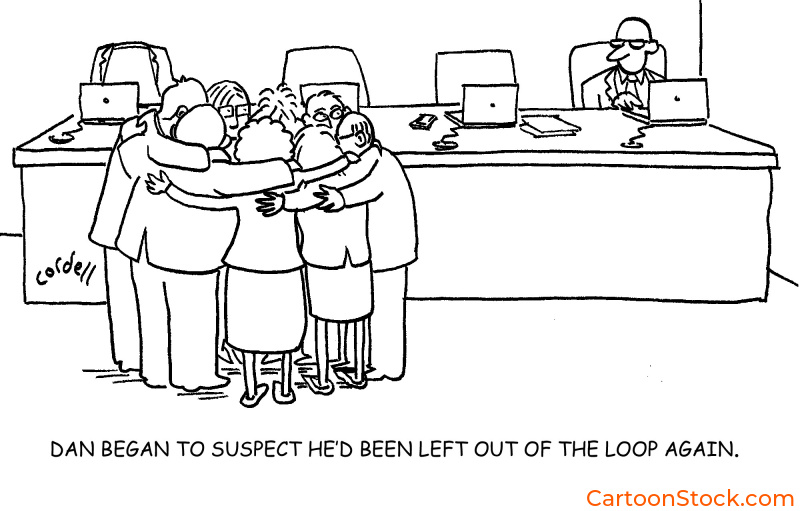As flexible work has stayed the norm, creating a sense of belonging across hybrid and remote teams is more challenging—and more essential—than ever. From onboarding to everyday communication, cartoons can play a unique role in bridging the distance, humanizing messages, and helping teams feel connected even when they’re not in the same room.
→ Our full guide: Using Cartoons to Support Diversity, Inclusion & Belonging
In this article, we’ll explore how using cartoons to build belonging across hybrid and remote teams can strengthen connection, spark empathy, and make digital interactions feel more human.
The Belonging Problem in Remote and Hybrid Workplaces
People want to feel seen, valued, and included at work. But for employees who work remotely—especially those who are newer, more introverted, or part of an underrepresented group—that’s often easier said than done. Belonging can erode without the informal interactions that happen naturally in physical offices: watercooler chats, hallway jokes, spontaneous celebrations, and even eye contact in meetings.
Common challenges for hybrid and remote teams:
- Communication that feels transactional or overly formal
- Isolation from workplace culture and social connection
- Lack of nonverbal cues or humor in written messages
- One-size-fits-all policies that ignore context and flexibility
That’s where cartoons come in: they can reintroduce levity, warmth, and nuance in low-touch communication environments.
Why Cartoons Help Build Belonging Across Distance
Cartoons offer more than just a visual break—they provide emotional and social cues that many hybrid and remote employees miss out on. Here’s why using cartoons to build belonging works:
- Tone setting: Cartoons soften digital messages and reduce misinterpretation.
- Human connection: A well-placed cartoon reminds people there’s a person behind the screen.
- Shared experience: Funny, relatable visuals reinforce team identity and shared challenges.
- Inclusivity: Cartoons can normalize different working styles, tech mishaps, or flexible hours in a humorous way.
- Visual memory hooks: Cartoons help ideas stick and give people something to react to, share, or comment on.
Where to Use Cartoons to Create Connection
To use cartoons to build belonging, the placement matters just as much as the content. Try adding them to:
- Onboarding documents to introduce team culture with personality
- Zoom or Teams backgrounds to spark light conversation before meetings
- Internal newsletters or Slack channels to brighten routine updates
- Remote training modules to help teams feel seen and supported
- Digital signage or dashboards that acknowledge employee experiences
Make It Inclusive: Cartoon Best Practices for Remote Teams
To ensure your cartoons support belonging across all employees, not just some:
- Avoid inside jokes that only in-office teams would understand
- Represent diverse team setups—don’t default to the nuclear family at home or traditional office backdrops
- Depict different working styles: pajamas, toddlers, time zones, shared desks, headphones
- Use respectful humor: The goal is to connect, not single people out
- Think globally: Visual jokes should translate across cultures when possible
A cartoon that works for a London-based HR team may fall flat for a developer in Delhi. Pick humor that travels.
Q&A: Cartoons and Remote Team Inclusion
Q: Do cartoons really improve digital team culture?
A: Yes—when used with care. They add personality, reduce friction, and help people feel part of something beyond just tasks.
Q: Are cartoons appropriate for professional settings like onboarding?
A: Absolutely. Cartoons can set a welcoming tone and convey culture faster than paragraphs of text.
Q: What kind of cartoon works best for hybrid teams?
A: Cartoons that are inclusive, relatable, and lightly humorous—especially those that reflect shared challenges like tech issues or communication hiccups.
Keep Reading:
Next Article: Using cartoons to spark dialogue around sensative workplace issues


